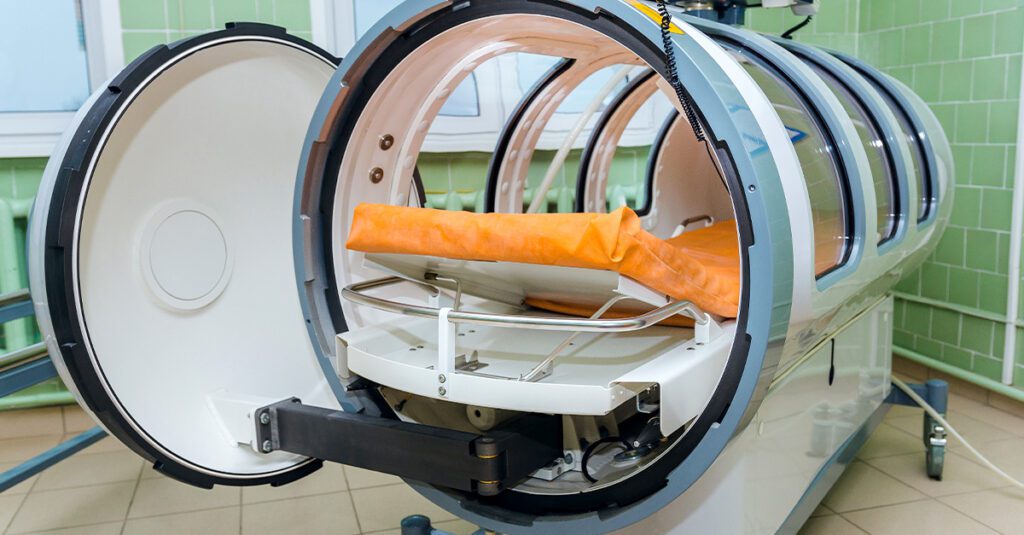Hyperbaric Oxygen Therapy and Cancer Treatment
Hyperbaric Oxygen Therapy (HBOT) is a popular therapy used by athletes and wellness-minded individuals alike. Known to promote wound healing and with positive effects on tissue and cell health, it can also help manage the side effects associated with cancer treatment. If you’re undergoing treatment for cancer and are considering Hyperbaric Oxygen Therapy to reduce the impact of your side effects and improve your quality of life, here’s what to know.
What is Hyperbaric Oxygen Therapy?
Hyperbaric oxygen therapy involves entering a special pressured chamber filled with pure oxygen. The treatment aims to flush the body with enough oxygen to promote healing and repair. First used to treat divers with decompression sickness (“the bends”), it has since been used to treat carbon monoxide poisoning and has been clinically approved in managing conditions including gangrene, infection, slow-healing wounds, and delayed radiation injury.
Treatment is conducted over multiple sessions, with each session lasting between 90 minutes to two hours. The session frequency and length depend on your needs, your health, and your doctor’s recommendations.
Managing Radiation Therapy Side Effects
While Hyperbaric Oxygen Therapy has not been shown to treat cancer itself, it can help mitigate the side effects of chemotherapy and radiation therapy. Benefits of oxygen therapy for cancer patients undergoing treatment include:
- Wound healing. Cancer treatment can slow wound healing, resulting in cuts and bruises that take time to heal and are at risk of infection. Skin grafts from surgery or reconstructive surgery can also take longer to heal. HBOT reduces swelling while also promoting tissue healing.
- Infection protection. People undergoing cancer treatment are immunosuppressed and are at higher risk of infection. HBOT can help strengthen immune responses while also reducing the action of bacteria that can cause infection.
- Anemia treatment. Anemia in cancer patients is common. By restoring damaged blood vessels and promoting an oxygen-rich blood environment, HBOT can support patients with anemia.
- Cell regrowth. Cancer treatment can affect the skin and soft connective tissue. HBOT promotes the regrowth of collagen and skin cells, as well as soft tissue, and helps prevent necrosis.
- Jaw, gum, and tooth health. Radiation therapy can damage the mouth when treating head and mouth cancers, resulting in tooth loss and jaw collapse. HBOT can help reduce these side effects and promote overall healing.
- Urinary bleeding. HBOT can help reduce the likelihood of urinary bleeding in prostate cancer patients.
While HBOT can be used during chemotherapy or radiation therapy, it also has benefits after treatment has been completed. Side effects can continue or even show up several years after treatment, but HBOT can be used to manage the impact of these.
Because HBOT has been shown to help manage the side effects of cancer treatment, it may be covered partially or wholly by your insurance or Medicare. Talk with your insurance company to discuss any potential out-of-pocket costs.
Talk to Optimum Human about HBOT
At Optimum Human, we’re proud to offer state-of-the-art Hyperbaric Oxygen Treatment therapy. If you’re interested to learn more about how HBOT can help mitigate the side effects of radiation therapy or chemotherapy or would like to arrange a tour of our facilities, get in touch! We’re happy to walk you through our treatment offering and will always work to your doctor’s recommended treatment regimen.

